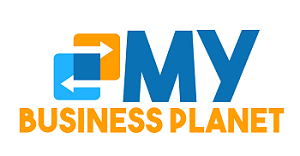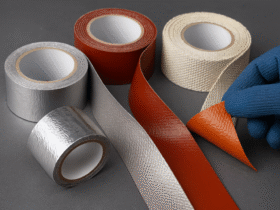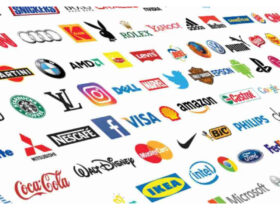Progress in science and technology often starts with asking the right questions. In high-complexity fields like semiconductor design, photonics, and quantum computing, breakthroughs are no longer found solely by following a well-charted roadmap. They are increasingly sparked by inquiry, cross-pollination, and the kind of curiosity that challenges standard boundaries. At the SPIE lithography conference, Erik Hosler, a consultant and former EUV lithography expert, recognized how this spirit of questioning is redefining the culture of innovation across the semiconductor industry.
For decades, technical advancement has driven optimization, smaller nodes, better throughput, and fewer defects. But as manufacturing reaches the nanometer scale and physics grows less forgiving, curiosity has become more than an intellectual exercise. It is now a practical strategy. Engineers, scientists, and designers must be willing to ask open-ended questions that probe assumptions, explore unknowns, and push beyond their specializations. This kind of intentional questioning, curated curiosity, is what keeps the industry moving forward when certainty is in short supply.
Questions as Catalysts
In complex, fast-evolving fields, questions serve as a form of navigation. They help professionals decide what to pursue, what to evaluate, and where to look when existing methods no longer yield expected results. When an engineer asks, “Why does this pattern collapse at higher doses?” or a designer wonders, “What happens if we invert the mask layout for this layer?” They are not just seeking answers. They are reframing problems and uncovering new dimensions of possibility.
Good questions disrupt linear thinking. They force cross-disciplinary collaboration and invite dialogue between materials scientists, lithographers, system architects, and quantum physicists. These dynamic, open innovation pathways would never surface under the pressure of rigid process workflows or isolated problem-solving.
In advanced semiconductor development, a single, smart question can redirect months of experimentation. Whether it is about resisting behavior under EUV light or error tolerance in 3D chiplets, the ability to ask well-framed questions becomes a key differentiator in research and engineering culture.
Creating Spaces Where Questions Lead
Environments that encourage inquiry do not happen by accident. They must be cultivated and intentionally designed to allow for ambiguity, reflection, and the exploration of ideas without immediate pressure to justify or deliver. It is especially important in technical gatherings, where the norm has long been to present finished data or verified solutions.
The shift is beginning to take hold. More industry events are designing space for ideas in progress, unsolved challenges, and “what if” discussions. One notable example is the SPIE Advanced Lithography and Patterning conference, where recent sessions have expanded well beyond optics and exposure tools.
Erik Hosler notes, “Last year, we included MEMS and MOEMS, and we will keep expanding to quantum to make this a place to ask questions … Lots of great things are going on, and something will emerge.”
It highlights a growing realization in the industry that conferences are no longer just venues for disseminating answers. They are becoming platforms for asking better questions, questions that attract new perspectives, collaborators, and eventually innovative solutions.
Cross-Disciplinary Curiosity
Some of the most significant leaps in semiconductor advancement have come from people willing to ask questions outside their domain. A physicist wondering how entangled photons behave under fabrication conditions may lead to breakthroughs in quantum lithography. A systems engineer asking about thermal noise in nanoscale materials may inspire new packaging techniques or interconnect strategies.
Curiosity across disciplines creates connective tissue between areas that otherwise operate in silos. It allows patterning engineers to think like materials scientists and vice versa. It encourages design teams to factor in stochastic behavior or wafer topography long before fabrication begins.
This kind of thinking is essential in today’s landscape, where device performance depends on tight alignment between process technology and architectural intent. Curated curiosity facilitates early exploration that prevents late-stage failure.
Engineering Cultures That Embrace the Unknown
In highly structured industries like semiconductor manufacturing, uncertainty can make you uncomfortable. Production demands predictability, and risk is often equated with inefficiency. But the frontier of technological progress lies precisely in that uncertain space, where cause and effect are unclear and where metrics have yet to be defined.
Companies and institutions that reward curiosity build resilience. They produce engineers who are more adaptable, more resourceful, and more capable of handling unexpected shifts in materials behavior, supply chain limitations, or design tradeoffs.
This mindset also prepares teams to work more fluidly with emerging technologies such as quantum computing or neuromorphic design, where conventional rules often fail. In these settings, asking foundational questions like “What do we mean by error in this system?” or “Can function emerge from variability?” becomes essential.
Educational Environments and Mentorship
Encouraging curiosity must start early. Universities and training programs that allow students to explore technical problems without rigid expectations foster a deeper engagement with the work. Students learn to ask why, not just how, and to challenge assumptions even when they do not yet have the vocabulary to answer their questions.
Mentorship also plays a critical role. Senior engineers who model curiosity, who admit when they do not know, and who pose thoughtful questions themselves help normalize the habit across teams. It fosters a learning culture where questions are not signs of weakness but of insight and initiative.
This cultural value creates stronger contributors and better collaborators in industry and academia alike. It also leads to richer technical dialogue and more robust problem-solving over time.
Questions That Shape the Roadmap
The semiconductor roadmap itself is changing in response to curated curiosity. It now includes branches for patterning strategies that once seemed speculative, such as molecular resists, 3D integration pathways, and hybrid electronic photonic systems.
Each of these directions started with a question: “What if we could make EUV resists more like molecular assemblies?” or “Can we build logic architectures that tolerate failure in isolated nodes?” These inquiries and the R&D they inspire are changing the shape of the industry’s future.
Rather than being fixed in place, the roadmap is becoming a flexible framework. It adapts based on the most compelling questions being asked, not just by executives but also by researchers in labs, engineers on the fabrication floor, and students in training.
Questions as a Driver of Progress
In a complex and fast-moving domain like semiconductor technology, the best answers often begin with better questions. Whether in the form of technical inquiry, speculative design thinking, or cross-domain brainstorming, curated curiosity has the power to move the industry beyond the known and into truly innovative territory.
Asking questions is not just a precursor to discovery. It is a mode of engineering, a strategy for surviving ambiguity, and a means of creating adaptable and ambitious systems. It challenges groupthink, attracts unexpected collaborators, and uncovers blind spots before they become barriers.
When spaces are built to support thoughtful, open inquiry, something always emerges. Sometimes it is a product, other times a new method, but most often, it is a clearer understanding of what matters and what comes next.











